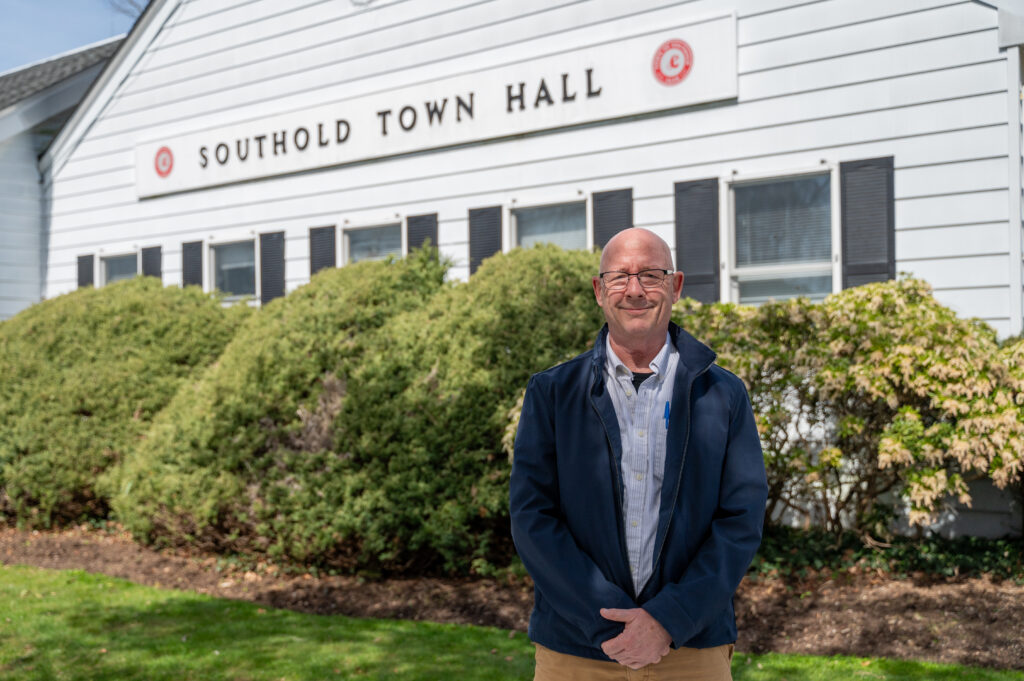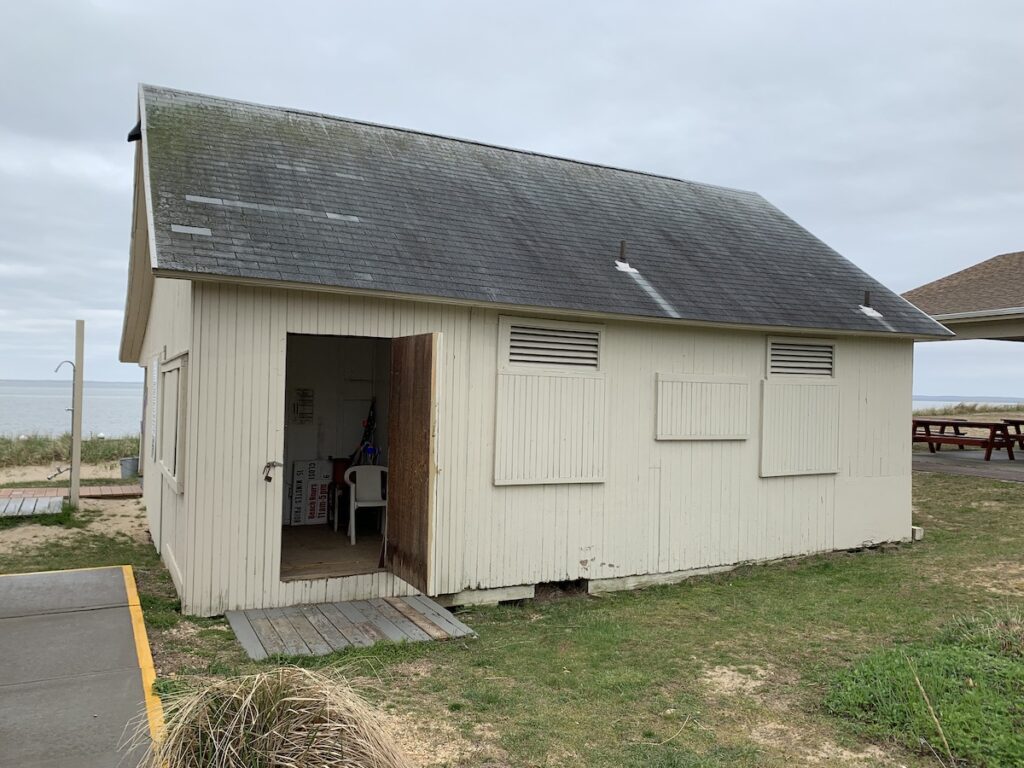Cutchogue barn nominated for historic registry dates to 1860

Some property owners might let an old barn at the back of their property rot. Others might just knock it down. But for the Smyth family, a 19th-century barn is not only a relic they have maintained, but an important piece of their family history.
On Saturday, the English-style barn at the rear of John and Rita Smyth’s nearly four-acre parcel — once part of the Fleet family’s estate — served as the altar for the outdoor wedding of their younger daughter, Dara, and Danny Aguilera.
“They did a wonderful job decorating and making it a beautiful spot for a wedding,” the bride said.
The celebration took place amid an effort by the Smyth family and Southold Town’s Historic Preservation Commission to place the barn — the oldest section of which dates to about 1860 — on the town’s registry of historic landmarks. Entries on the list are protected from demolition and receive a brass plaque commemorating their historic significance. The HPC also helps property owners maintain these structures, offering guidance on how to repair them while preserving their historic character. The most recent addition a home in Orient, was placed on the registry in 2020.
Mr. Smyth’s desire to subdivide his property prompted the request to add the barn to the registry. Although he said he has no specific plans for divvying up the land, he said he did so for his daughters.
“I have two daughters, and we have to see where they want to land,” Mr. Smyth said. “We would really love for them to be beside us.
“We fly by the seat of our pants,” he added. “We’re trying to figure it all out.”
While the town’s Land Preservation Commission handles the preservation of property, while the HPC is tasked with evaluating historic structures for preservation. The HPC’s current list contains more than 200 entries from the 17th, 18th, 19th and early 20th centuries.
“Anything that is a representative sample of a period in time is essential to preserve,” said HPC chairperson Mariella Ostroski,. “The benefit of preservation is really to preserve our cultural heritage … There’s been a lot of talk about land preservation, but landmark preservation really speaks to the community about who came before. It’s not just that there is a building, but there’s a culture that was established for the benefit of people in the community. It’s all about a living culture, not just about bricks and mortar.”
In the mid-1800s, the Smyths’ barn was part of the massive estate belonging to the Fleet family. Around this time, according to historic accounts, Henry Fleet, a descendant of William Wells, who settled in Southold in 1640, made his living growing potatoes, cauliflower, oats and other crops. But by the end of the century, he turned to breeding and raising horses. After his death in 1894, his son, George H. Fleet, took up the reins and continued to breed and train racehorses.
Among the various markings throughout the barn — which the Smyths’ older daughter, Olivia, refers to as “graffiti” — are names and phrases she believes denote racehorses.
“There’s like all this stuff that’s written, ‘Cutchogue’ is spelled [wrong],” Olivia Smyth said during a tour of the barn’s interior. “There’s a Polish address … Over on the other wall, I think these are racehorses. And then there’s a weird little drawing of a little man there. It’s pretty cool.”
“One of [the addresses] is from Ireland, and I’m from Ireland so that’s really amazing,” Rita Smyth added. “There was probably a farmhand [from Ireland] who slept upstairs in the barn.”
While the writing, the original beams and the exterior vertical planks and wood shingles remain intact, the Smyths have made use of the barn over the years. It holds some farm equipment, various Christmas decorations and even antique knickknacks Rita Smyth has acquired over the years.
“My wife goes to reclaim at the dump and she picks up vases every once in a while,” Mr. Smyth said, “which came in very handy for the wedding.”
A contractor by trade, Mr. Smyth had concrete poured over the dirt floor of the newer, larger addition to the structure to transform it into a workshop. He said the damp root cellar beneath the original building, with its low ceilings and cold brick walls, does not see much use, and explained it would have been excellent storage for potatoes and other crops some 150 years ago.
Mr. Smyth may not be a farmer, but his wife certainly has a green thumb. Anyone walking through their property is sure to admire the flowers. They will likely also stop and look at the chicken coop Mr. Smyth built during the COVID-19 pandemic. While they’ve made the land that once defined the Fleet estate their own, they enjoy its history. The barn, should it be deemed historic, will stand as a constant on an ever changing landscape. It will preserve the Fleet family’s legacy, the heartfelt memories the Smyth family has enjoyed, and offer a glimpse into the daily experiences of all who have lived, worked or visited over the generations.
On Saturday, as they were preparing for the wedding, Olivia Smyth said they met one such family who knocked on their door.
“My mom answers and they ask, ‘Are you having a wedding here?’ ” she said. “They were stopping by because their aunt got married here. There’s lots of people who apparently got married here. The property is great and the barn’s so cool.”
The Southold Town Board has set a public hearing open to anyone wishing to weigh in on the HPC’s recommendation for Tuesday, Aug. 15, at 7 p.m.








